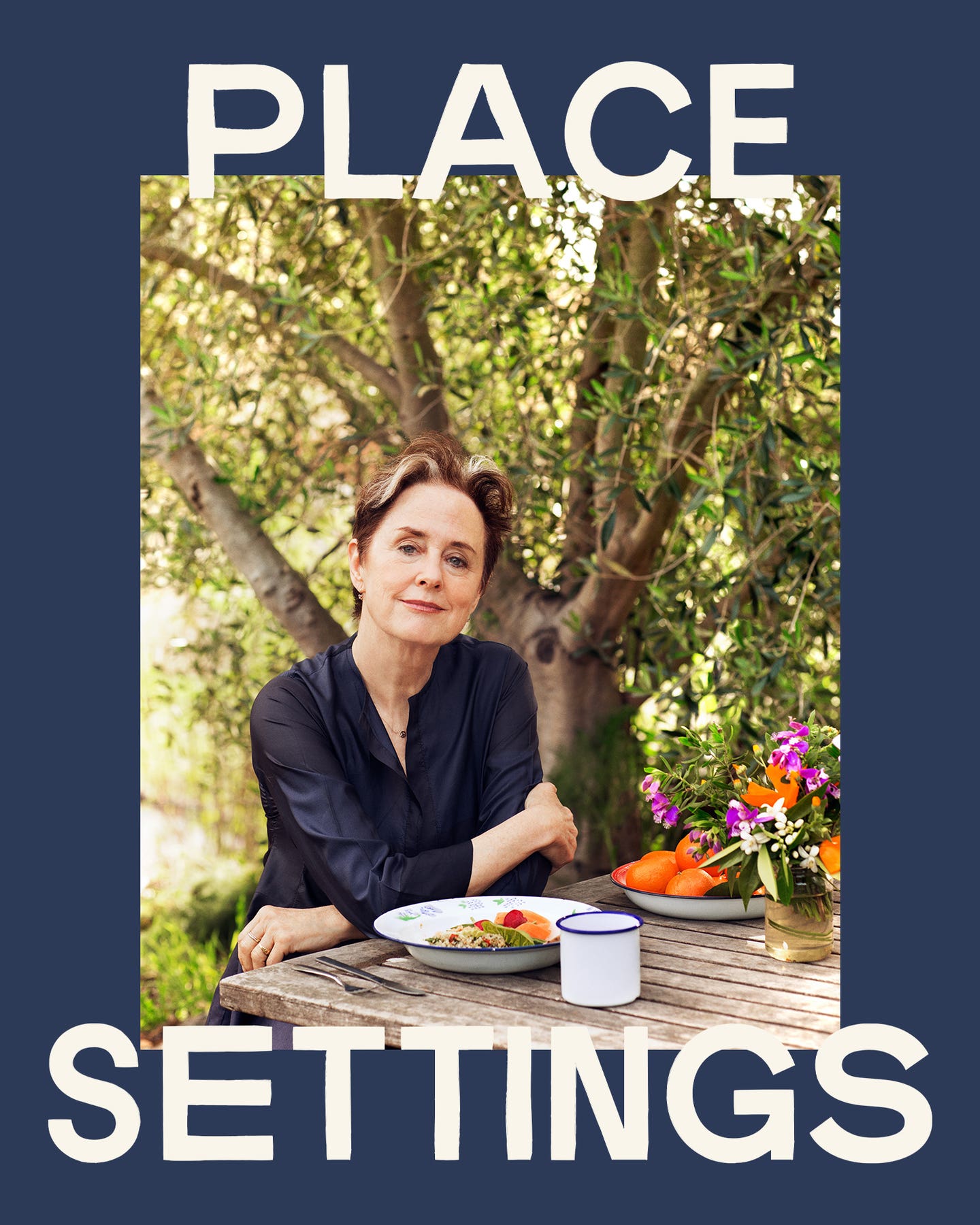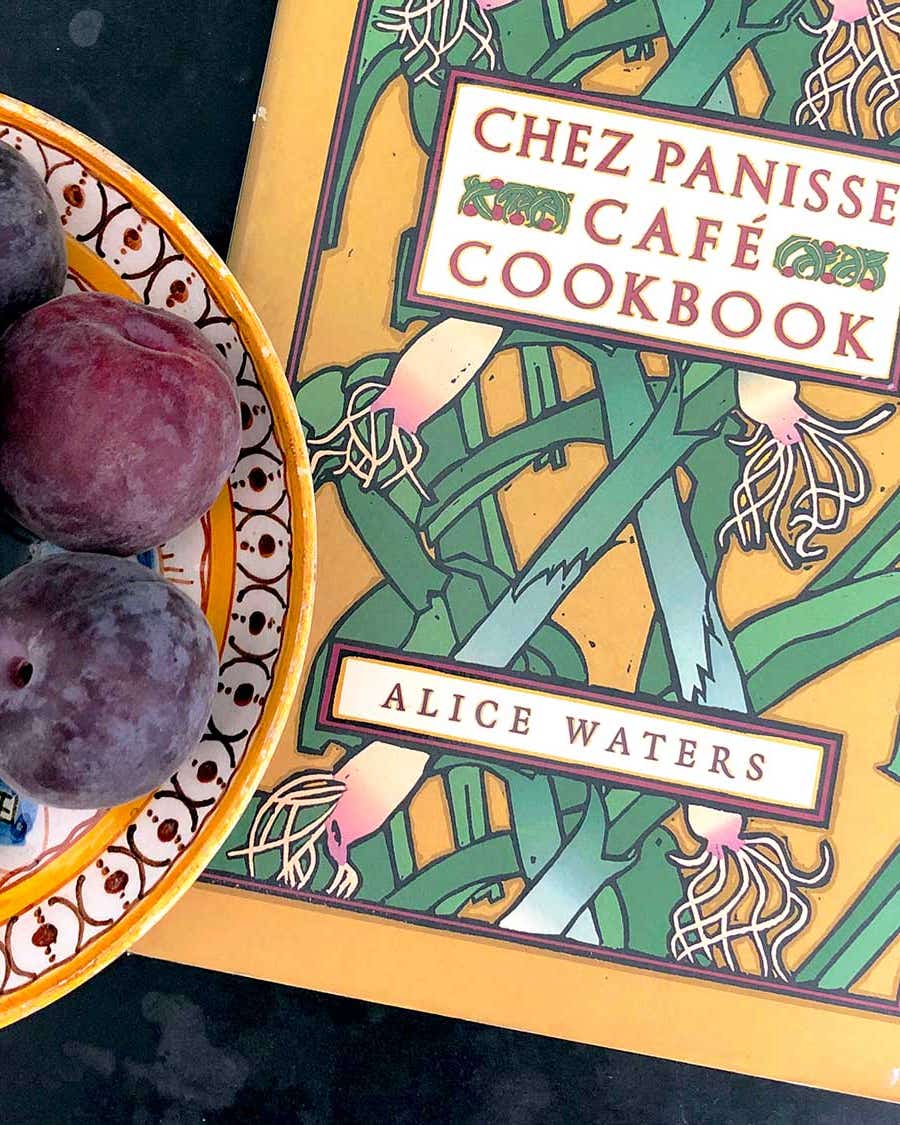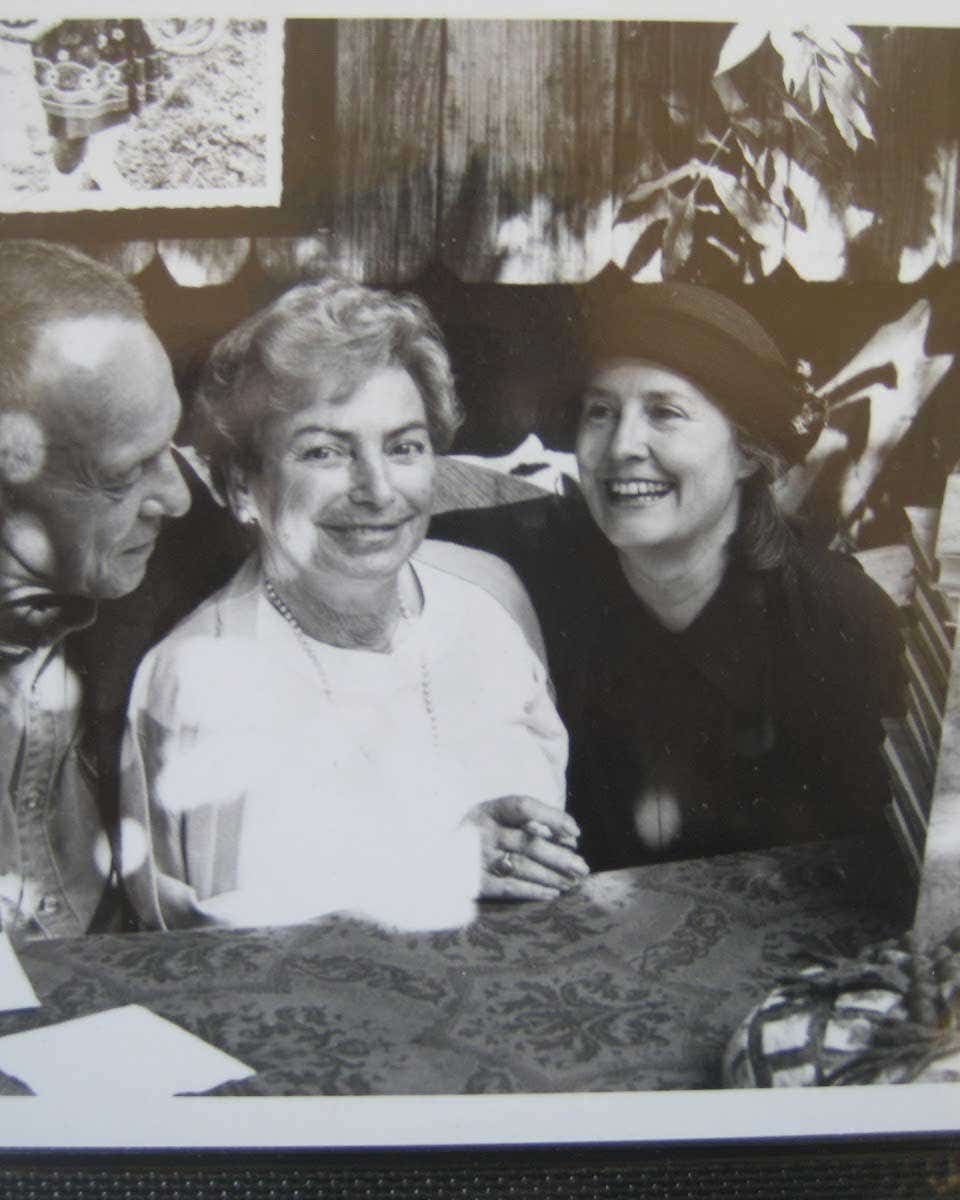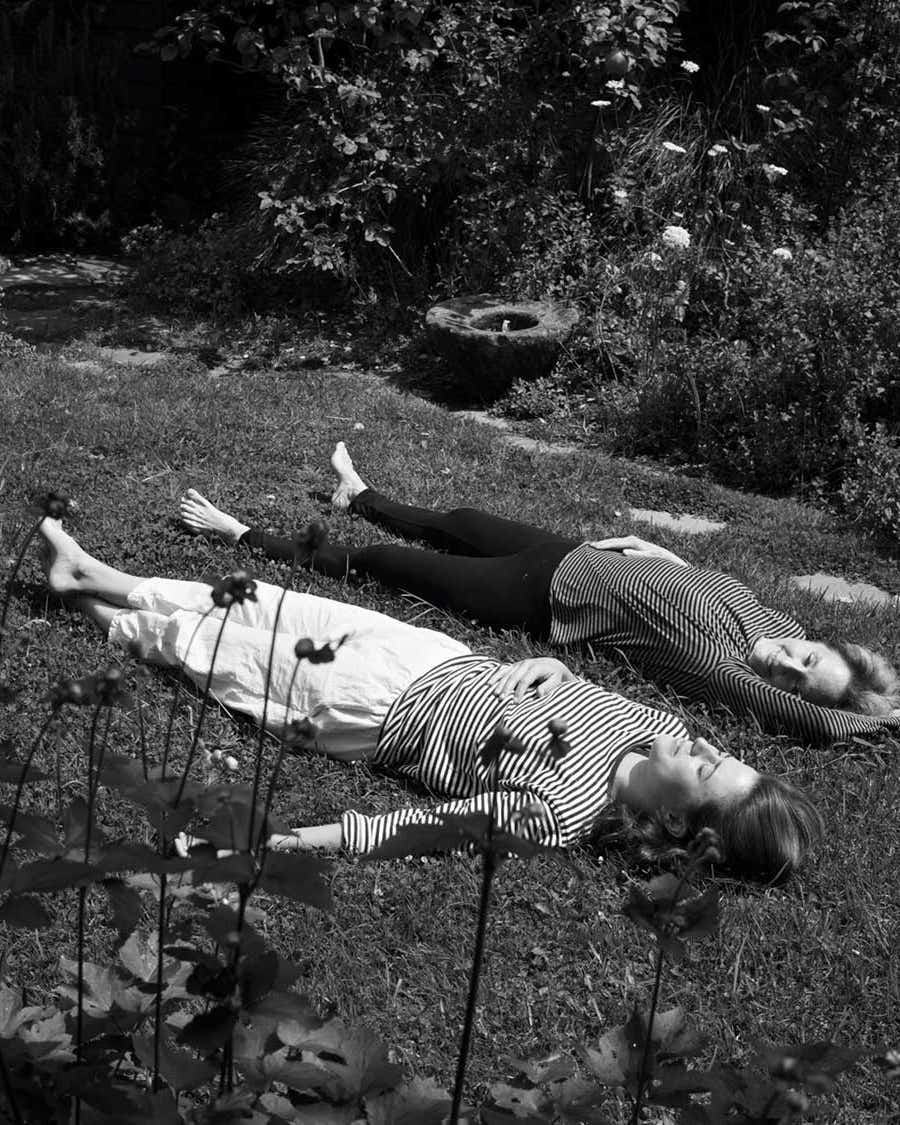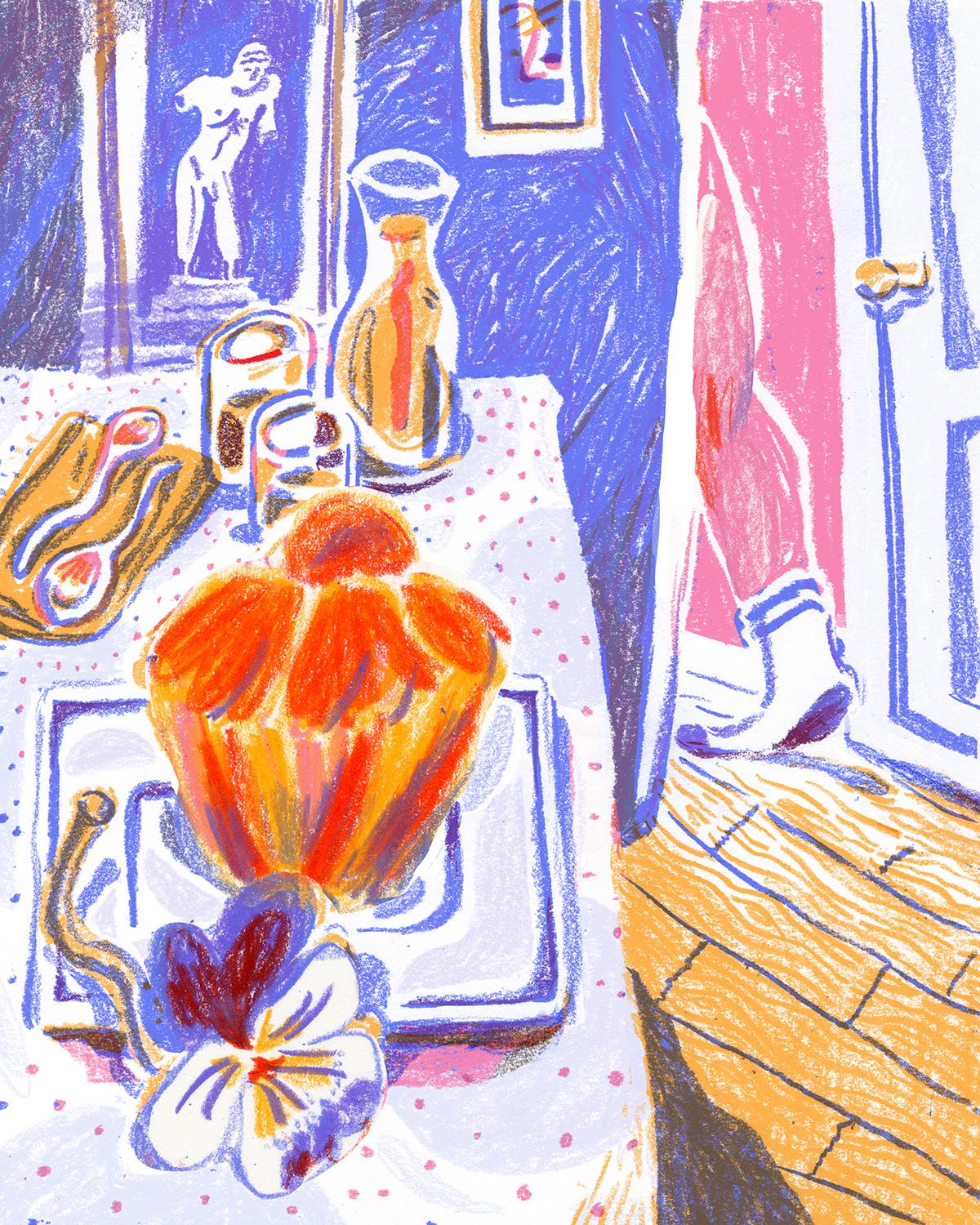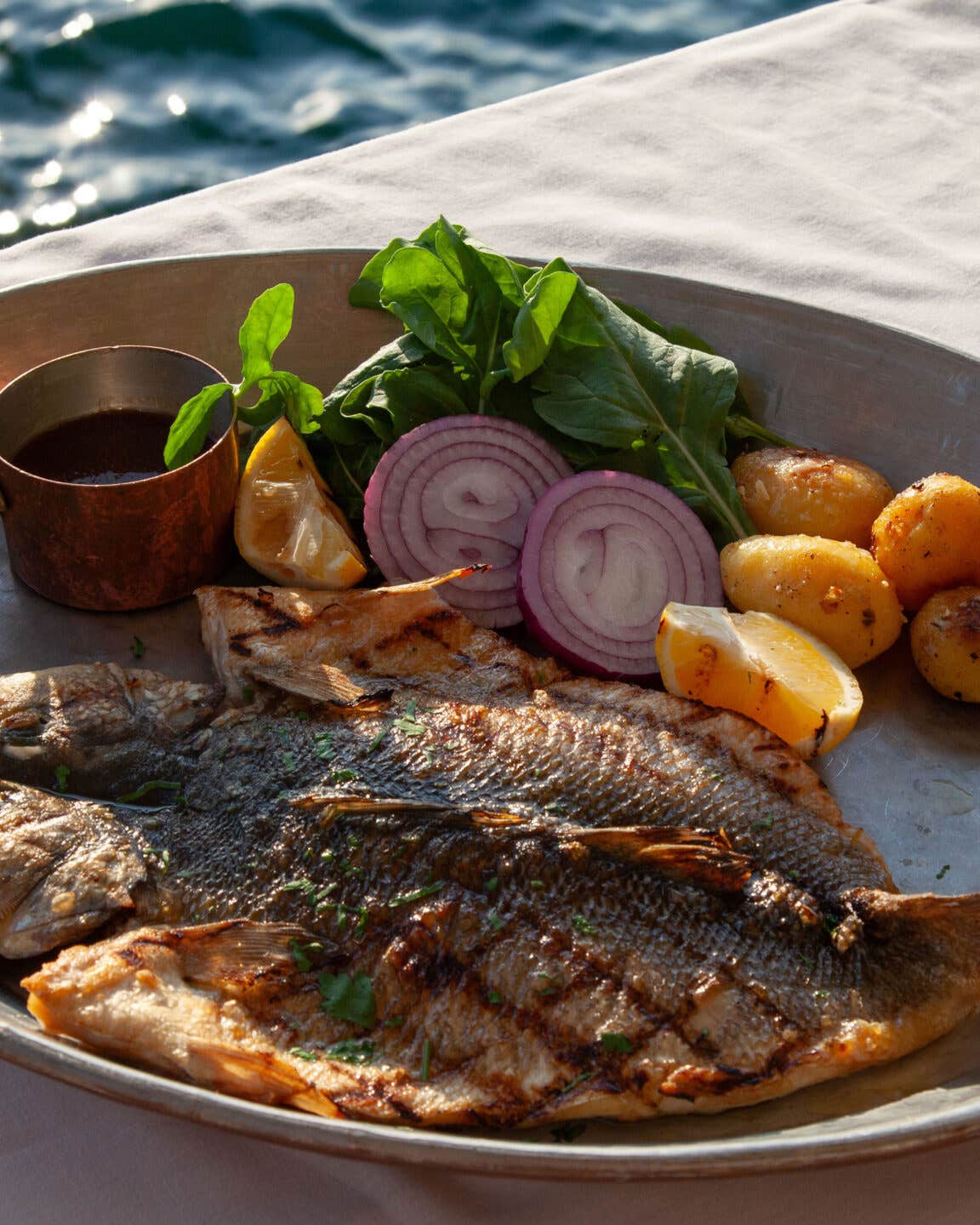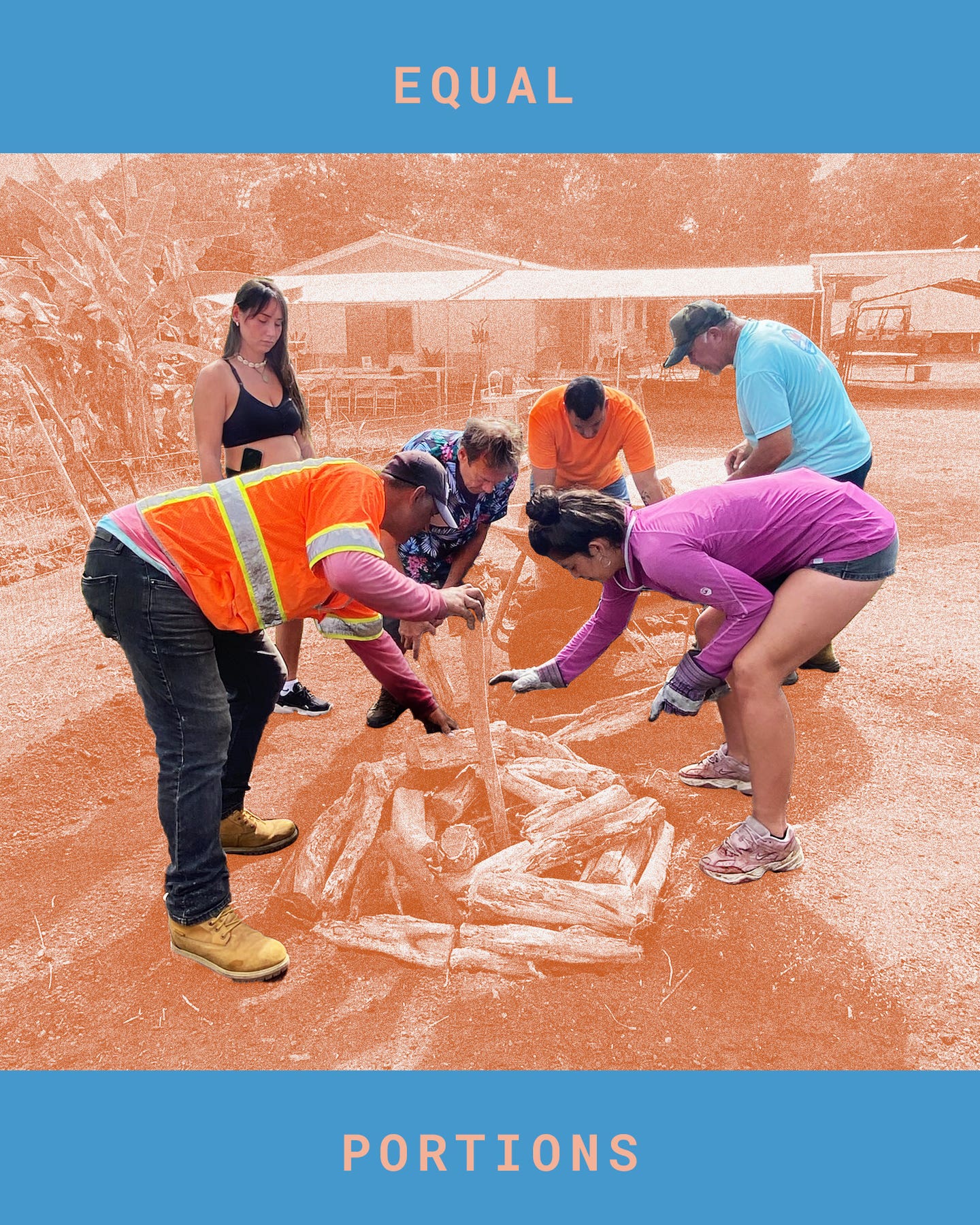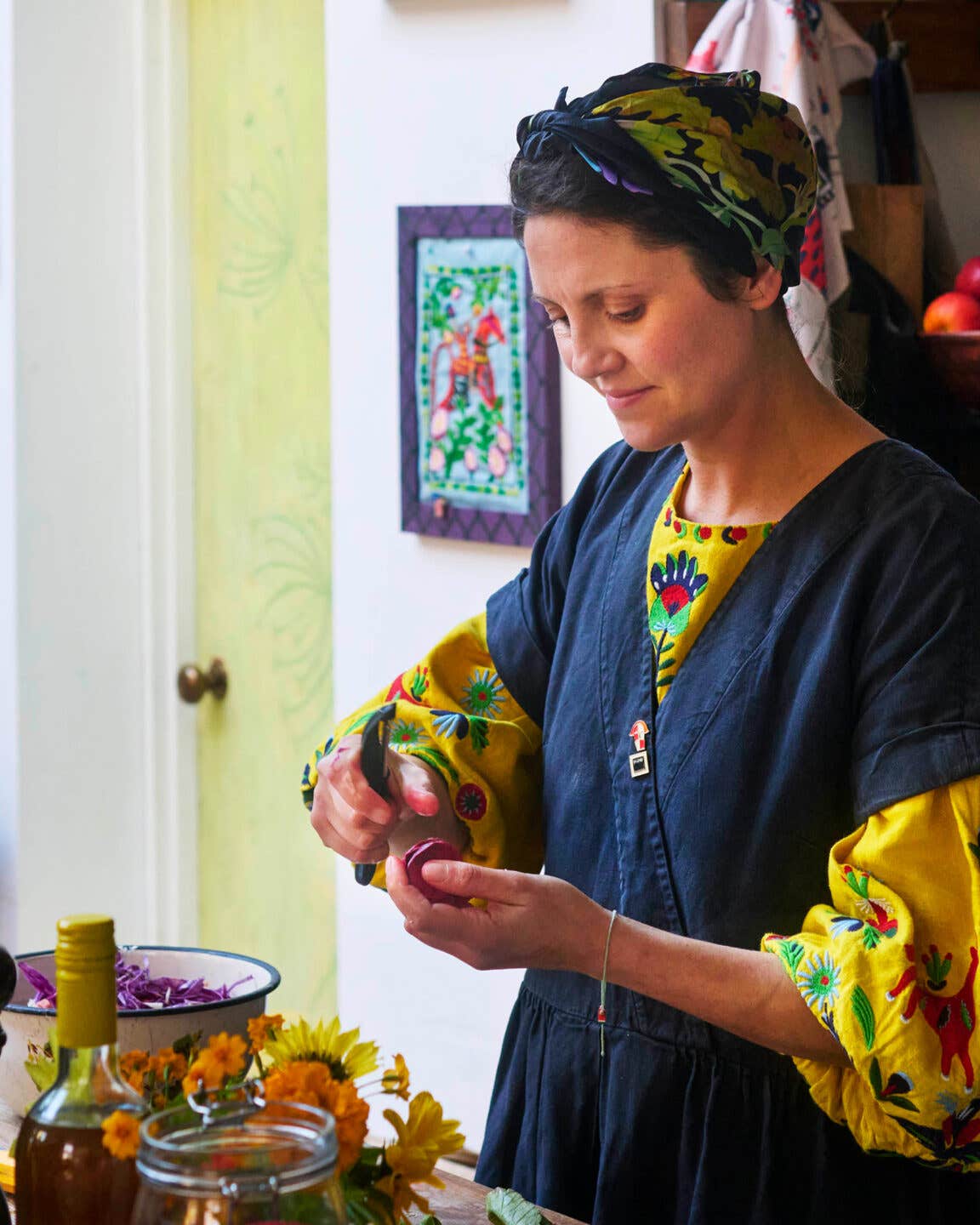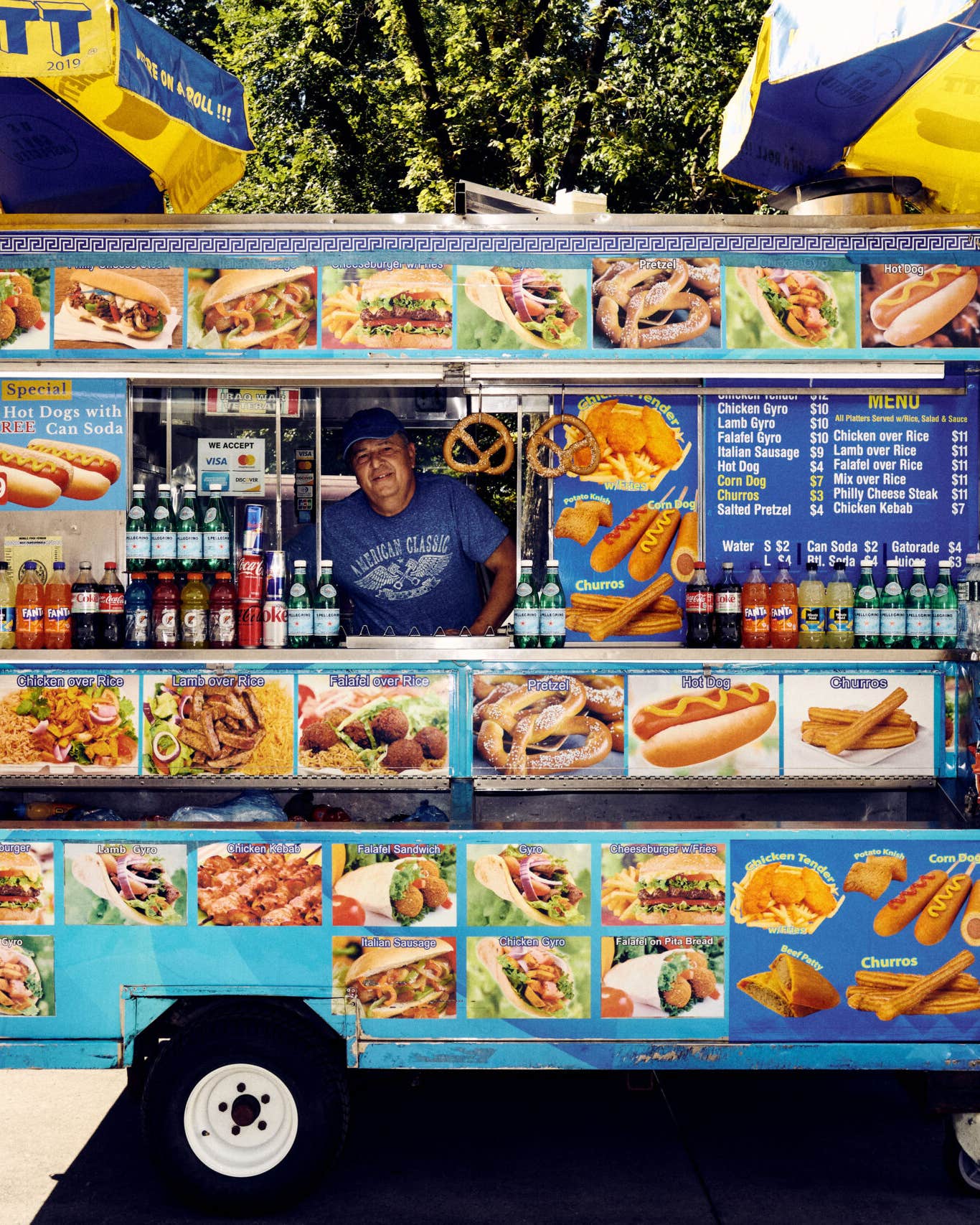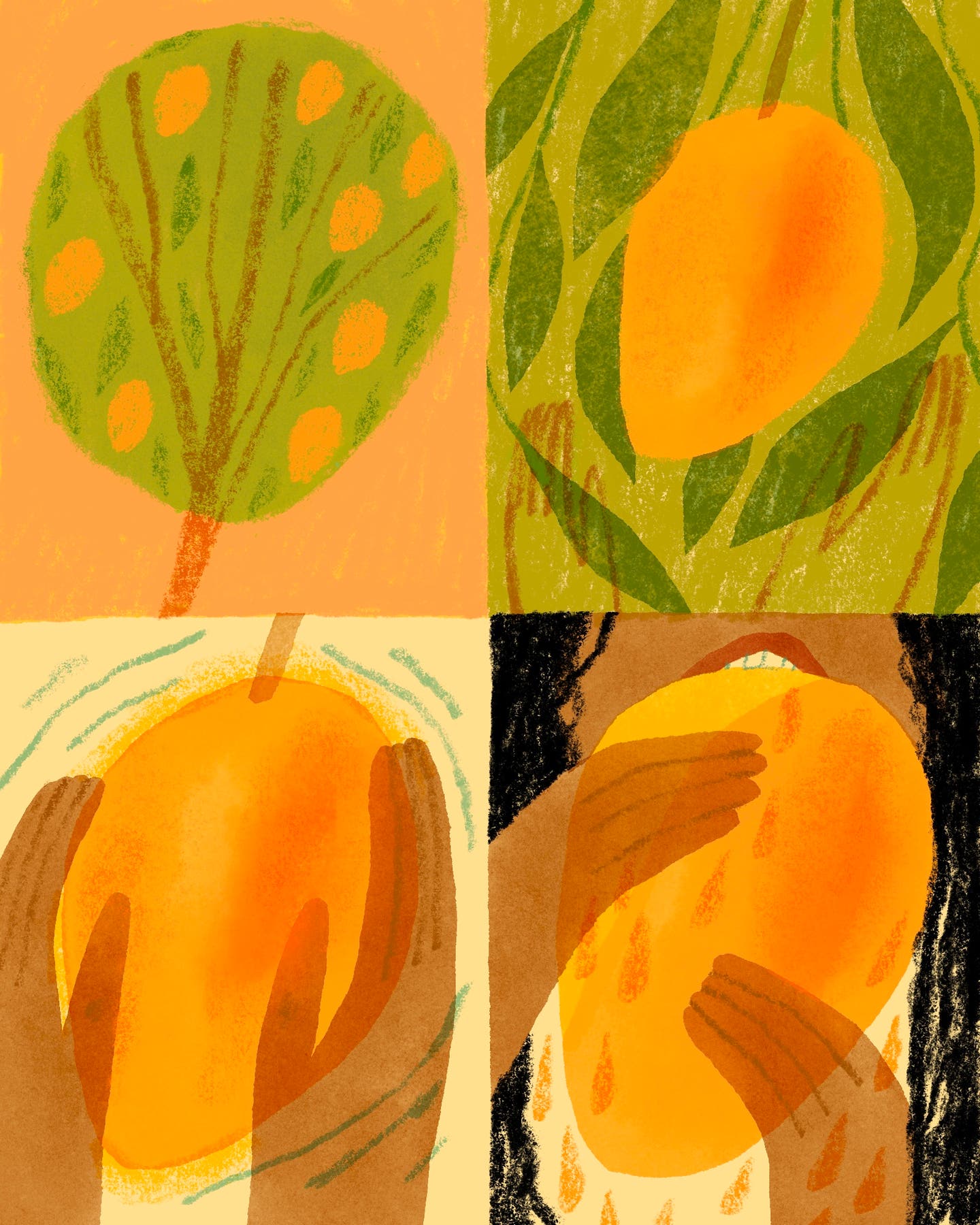Why Alice Waters Believes Gardening Can Save Our Democracy
According to the Chez Panisse chef and Edible Schoolyard founder, growing your own food might be the most meaningful work you can do.
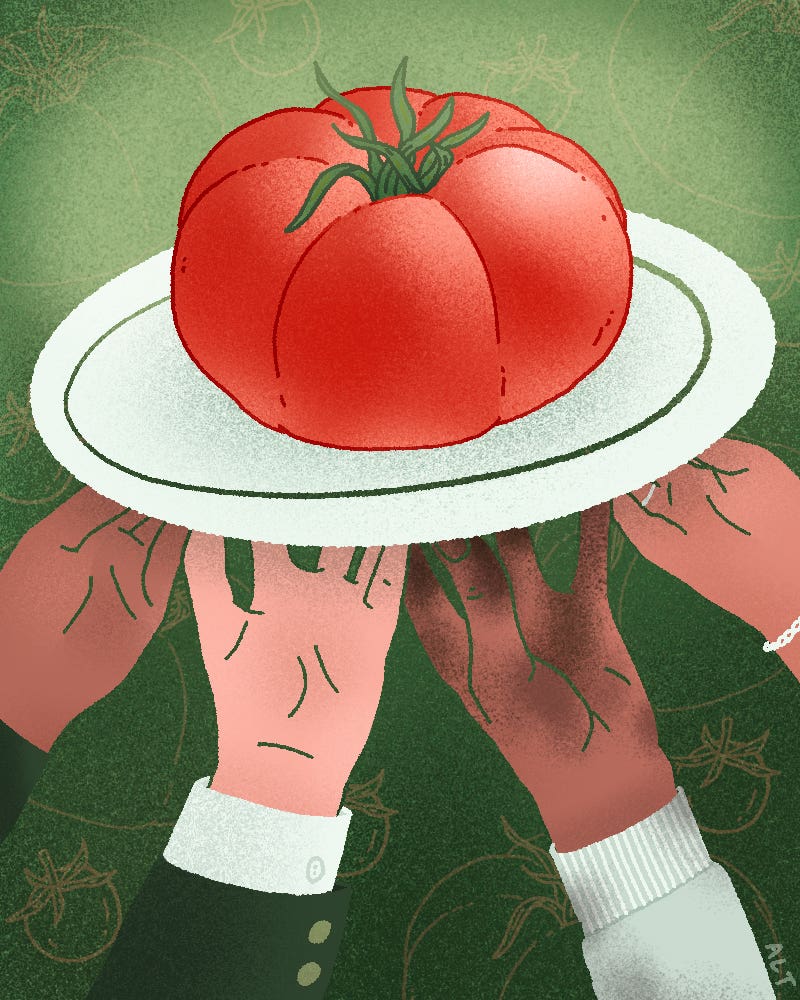
Plot to Plate is a SAVEUR column in which features editor Alex Testere exercises his green thumb, sharing practical gardening tips and seasonal produce-driven recipes from his patch of earth in New York’s Hudson Valley. He is also the author and illustrator of Please Grow: Lessons on Thriving for Plants (and People).
A tomato is never just a tomato. Even when you, alone in your garden on a late summer afternoon, sift through the tangle of overgrown vines, gently prodding each available fruit before plucking the ripest specimen from its stem—even then, you are merely scratching the surface. You may have planted that tomato, but who grew the fruit that produced the seed you sowed? Who packaged that seed and shipped it to your door, or trucked it to the retailer from which you procured it? Who raised the cow that created the manure that amended the compost that fertilized the bed? Maybe you, indefatigable farmsteader, did all these things yourself—in which case, kudos!—but if you look closely enough, I think you’ll find some spaces where another person’s work shines through the cracks.
Gardening has always been a community-powered enterprise, and no one knows this better than Alice Waters, chef at Chez Panisse in Berkeley, California, and founder of the Edible Schoolyard Project, a nonprofit dedicated to teaching students around the world the value of (and skills behind) growing your own food. “There is no more meaningful work than that,” Waters told me recently in a Zoom call, where we discussed everything from the fleeting delights of perfectly ripe produce to gardening’s relationship to community and democracy. In October of this year, Waters will also receive the tenth annual Julia Child Award for her contributions to transforming American food and cooking.
On the subject of ripeness, I started thinking about the summer fruits I look forward to this time of year. Peaches and nectarines come to mind, and tomatoes, too. I’m sure to face flak from some of you for this, but I am very solid in my belief that a tomato has no business being consumed in the American Northeast outside the month of August, with some occasional exceptions for July and September. When a slice of sun-ripened summer tomato adorns a BLT or sits beneath a heap of herby chicken salad, I constantly wonder whose cruel joke it was to turn the otherwise anemic slices of mealy fruit into year-round sandwich staples. Perhaps that’s what first drew me to Waters’ recipe for Heirloom and Cherry Tomato Salad, a dish simply designed to celebrate a glut of the beautiful multicolored fruits.
While I would never attempt to “improve” a recipe of Waters’, I was inspired by our conversation (you’ll see why below) to toss some stone fruits into the mix, a balanced blend of whatever I could find at the farmers market in that perfect window of ripeness. I took a tip from Waters’ 1996 Chez Panisse Vegetables book and tore up half of a stale miche, tossed it in olive oil and minced garlic, and toasted it in the oven to make some croutons, their craggy edges eagerly awaiting a soak in the salad’s herby, shallot-filled vinaigrette. It’s one of those dishes you might only get a chance to eat once a year, at the singular convergence of ripe stone fruit and ripe tomatoes—and I think it’s all the better for it.
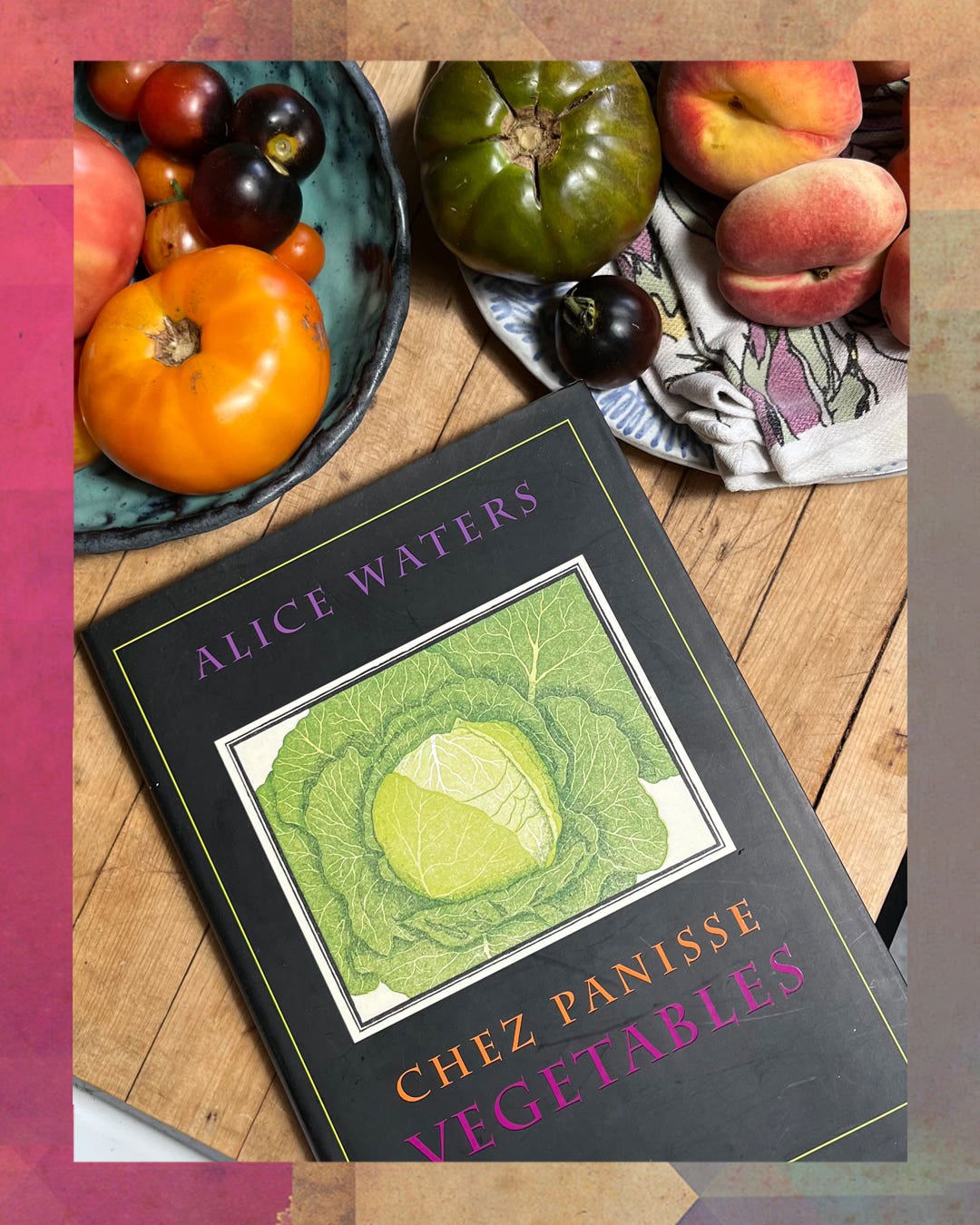
What follows is an edited and condensed version of my conversation with Waters:
Alex Testere: Thank you so much for joining me today, Alice. I’m so excited to chat about plants and gardening and everything they have to teach us.
Alice Waters: My pleasure! It seems we both see eye to eye there.
Will you tell me a little about how gardening first informed your relationship with food?
Well, I guess it began back when I was a kid. My parents had a victory garden during the war, and I grew up eating strawberries out of that garden when I was very, very little. It was very important for my parents—they had four kids and didn’t know how to feed them. And it was so great because all their neighbors had victory gardens, too, and they’d trade vegetables that way. I didn’t know that until I was a bit older, but I just love that idea, that you can get a neighborhood together and plant all different things and just share them. So no matter where we lived, including when we moved to California, they planted that victory garden.
And how did that evolve as you grew up?
When I arrived at Berkeley amidst the Free Speech Movement, that really changed my life because I felt then the power of the people to make change. And [activist] Mario Savio said don’t just study one discipline at school, you know? Go to another country and see what an education looks like there. I took him very seriously, and I up and went to France. I didn’t know at the time that France was a slow food nation, that it hadn’t been industrialized yet, and that was my first experience of a culture of eating only what was in season. So, for example, when those little fraises de bois (wild strawberries) were gone, I cried! I didn’t know I couldn’t have them all the time, or that they had to be gathered from the woods; they couldn’t be cultivated. I remember eating a Charentais melon in September and just having these extraordinary foods. I didn’t realize later that it was all about ripeness. I came home and I wanted to be able to eat and live like that.
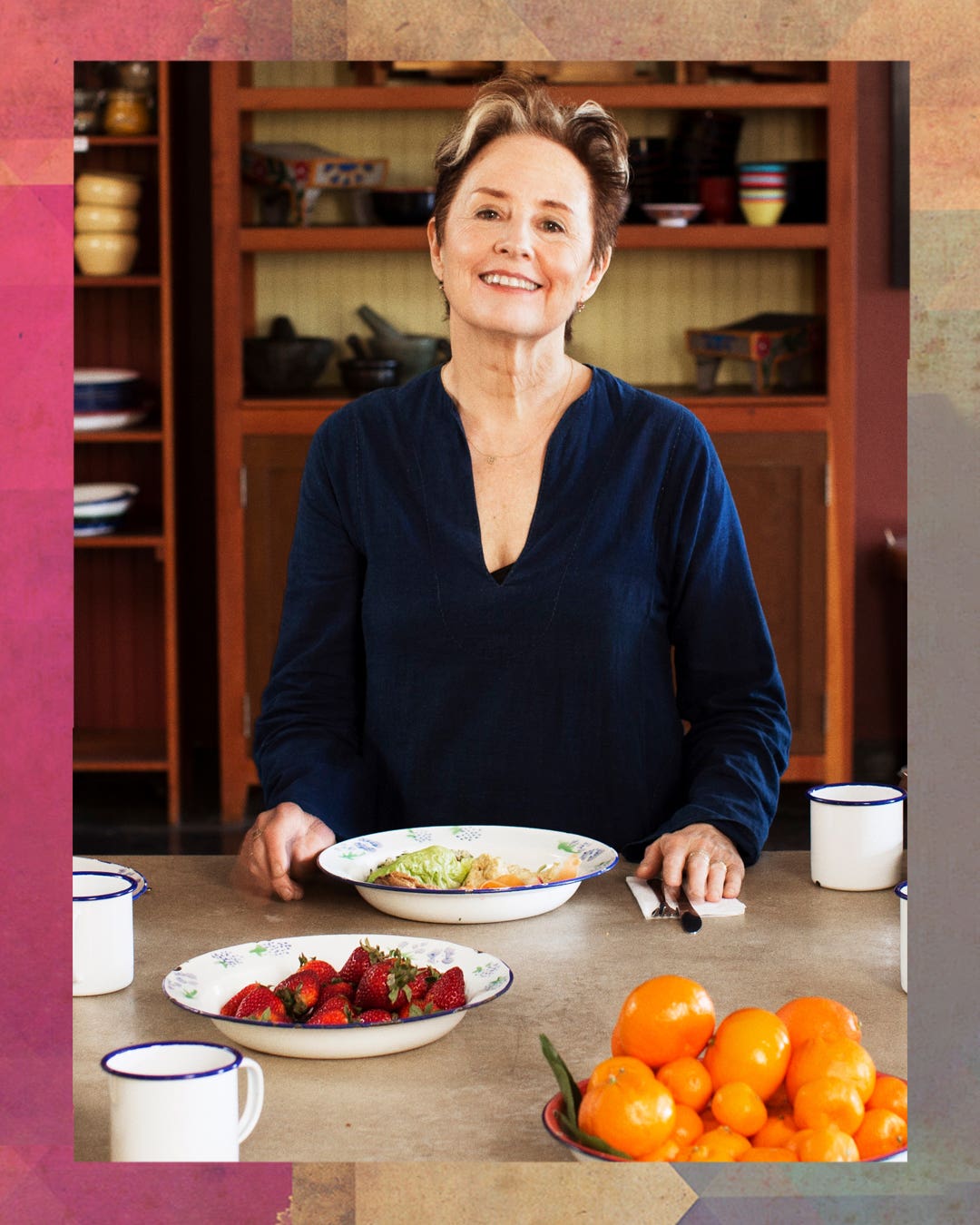
I can already see the throughline forming to your work at Chez Panisse and sourcing ingredients directly from local farms.
Yes, and now, after 53 years, the reason for the longevity of that restaurant is absolutely the ripeness of the ingredients—and of course, you can’t have anything ripe if it’s shipped from halfway across the world. It has to be picked before it ripens, and it never actually ripens in travel.
This whole idea of seasonal cooking really is about ripeness as a criteria for wonderful produce—and you can’t think about ripeness without thinking about where the food was grown, how far it’s traveling, and that perfect little window of time when that heirloom tomato, for example, is at its best.
I think you’re absolutely right. In 40 Years of Chez Panisse, Michael Pollan wrote the afterword about this, and I think he just nailed it. He ordered the fruit bowl, which at the time was a selection of ripe peaches, and he just understood this exactly.
[Editor’s note: Pollan describes the peaches, presented within their impossibly small window of ripeness, saying, “There are times … when no amount of culinary artifice can improve on what nature has already perfected, and it would be folly—hubris!—to try.”]
And I’m really relying on this idea to make school-supported agriculture a reality in our country. If we decide nationally—internationally, even—to have schools be the economic engine behind agriculture, then everyone would eat ripe food. I mean, Eliot Coleman is up there in Maine farming in his greenhouse in winter, and we’re going to need that, but this was how we always did things before 1950. No pesticides, no shipping of fresh produce. You know, I think it’s a part of how our democracy has lost its way. I know it’s about food, and this obsession with the values of fast, cheap, and easy.
It really shows us that access to fresh, ripe food for everyone has to be a community project. It’s like we’ve collectively forgotten that part of the process, and that personal connection to where the food comes from is the missing piece of the puzzle.
This is where the Edible Schoolyard Project came from. A woman at the San Francisco County Jail, her name was Cathrine Sneed, called me—she was a gardener and therapist there, and she asked if we would buy their vegetables for Chez Panisse if they grew them to our specifications. And I said absolutely, and she had me come meet her students, some of the inmates there. This one guy, maybe about 17 years old, told me it was his first day in the garden, but it was the best day of his life. I cried, and I said to myself, if it can work in a jail, it can work in a school. Thirty years later, we’re part of a network of over 6,500 schools around the world. Many of them are independent of us now, too: I can’t tell you how many are in Japan; [activist] Carlo Petrini has a million signatures he’s giving to the president of Italy to bring these programs to every school in the country; the mayor of Paris, a year ago, decided they would only buy organic, regenerative produce for the city’s schools from within 125 miles of the city, and they’re already close to meeting their goal.
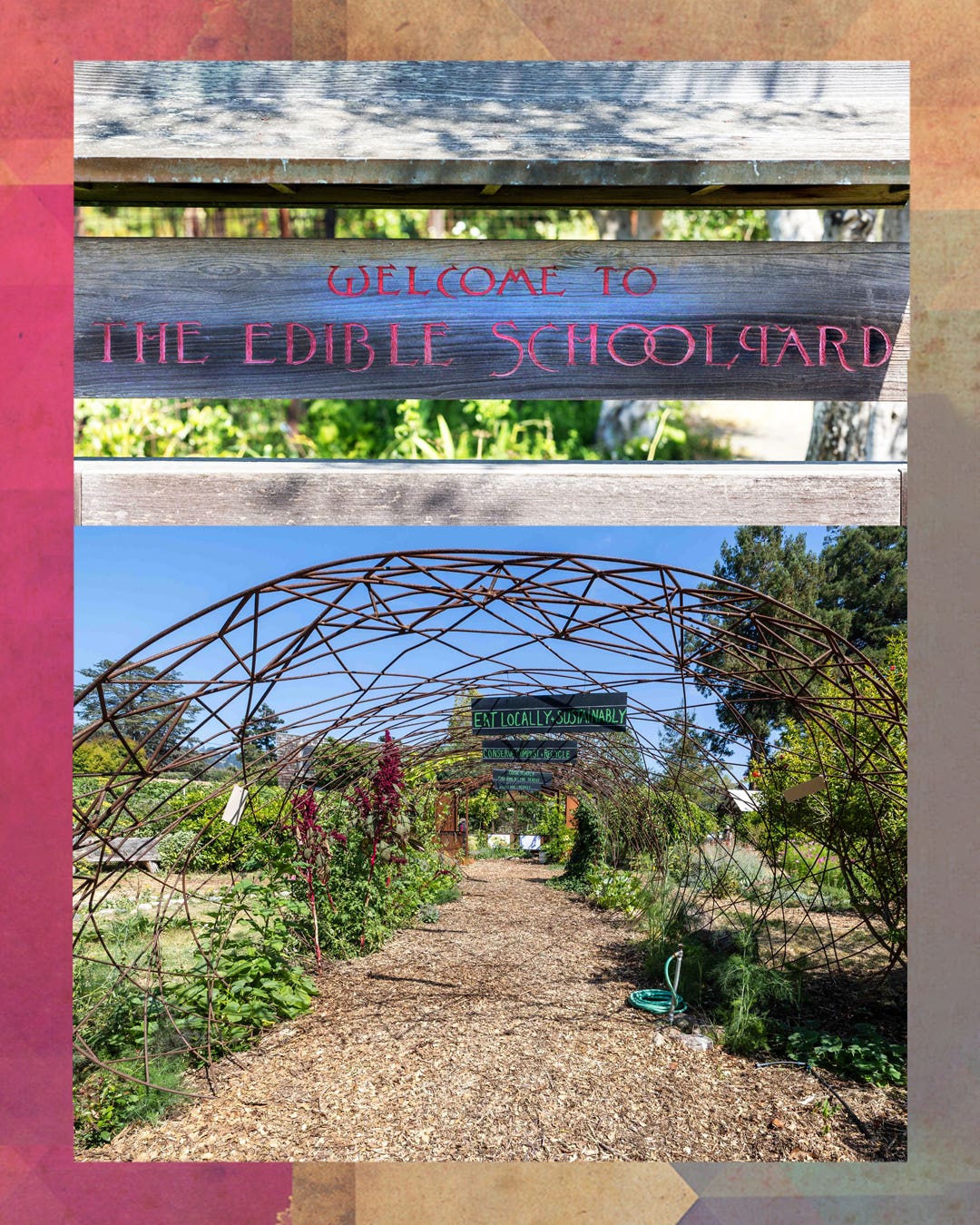
So it seems like there’s a need for this, an urgent desire for folks all over the world to create these kinds of community-driven food programs.
It’s meaningful work: “I planted this seed, I grew this plant, I picked this tomato.” I think the greatest issue in our country is a lack of meaningful work, but we don’t ever talk about it. My father in particular, he said, “When I don’t have meaningful work, I don’t want to be here anymore.” I think about that, and I don’t want to ever have work that I don’t love. I’ve loved every minute of the restaurant, and it has been a big challenge at times. But I love the people and that kind of collaboration. I never had a search committee finding people for me. I just ran into them and said, “Hey, do you want to do this?” And they were people that had all different talents.
I can’t help but think of the way plants collaborate with each other, how their roots intertwine and exchange nutrients, and, as with many forms of companion planting, the garden becomes a community in and of itself.
That’s exactly right. And everybody has a contribution to make, it doesn’t matter how small. If we didn’t have our wonderful dishwasher at Chez Panisse, we couldn’t run the restaurant. He deserves to be elevated, to have a nice place to work. And it’s that—this hierarchy of people we see as important and ones we see as not as important, it’s so wrong. We all eat together at the restaurant, whether it’s a dishwasher or the head chef, it doesn’t matter. And it is like the way nature works. But that’s why I think this idea, if it could really take hold in every country, then we could really address this question of meaningful work and community, but also of health and climate change, too.
We talked a little about regenerative agriculture, but what role do you feel gardening and growing food plays in addressing climate change?
I think it’s probably biodiversity that is my greatest hope for the future, because in this frightening world of climate change, we need to know what to plant when it’s hot, when it’s raining, when it’s really cold. And to do that, we need to exchange seeds and to know what’s happening around the world in other climates now. And of course, with all the incredible varieties of produce, whether it’s tomatoes or green beans or chicories in every color of the rainbow—it’s like wow, could we have a delicious solution to climate change, too?
So by collectively tending our gardens, we could be cultivating community, feeding the hungry, fighting climate change, and it can taste great, too. It sounds like a win-win-win-win to me.
It’s so important. There’s really nothing to lose.
Recipe
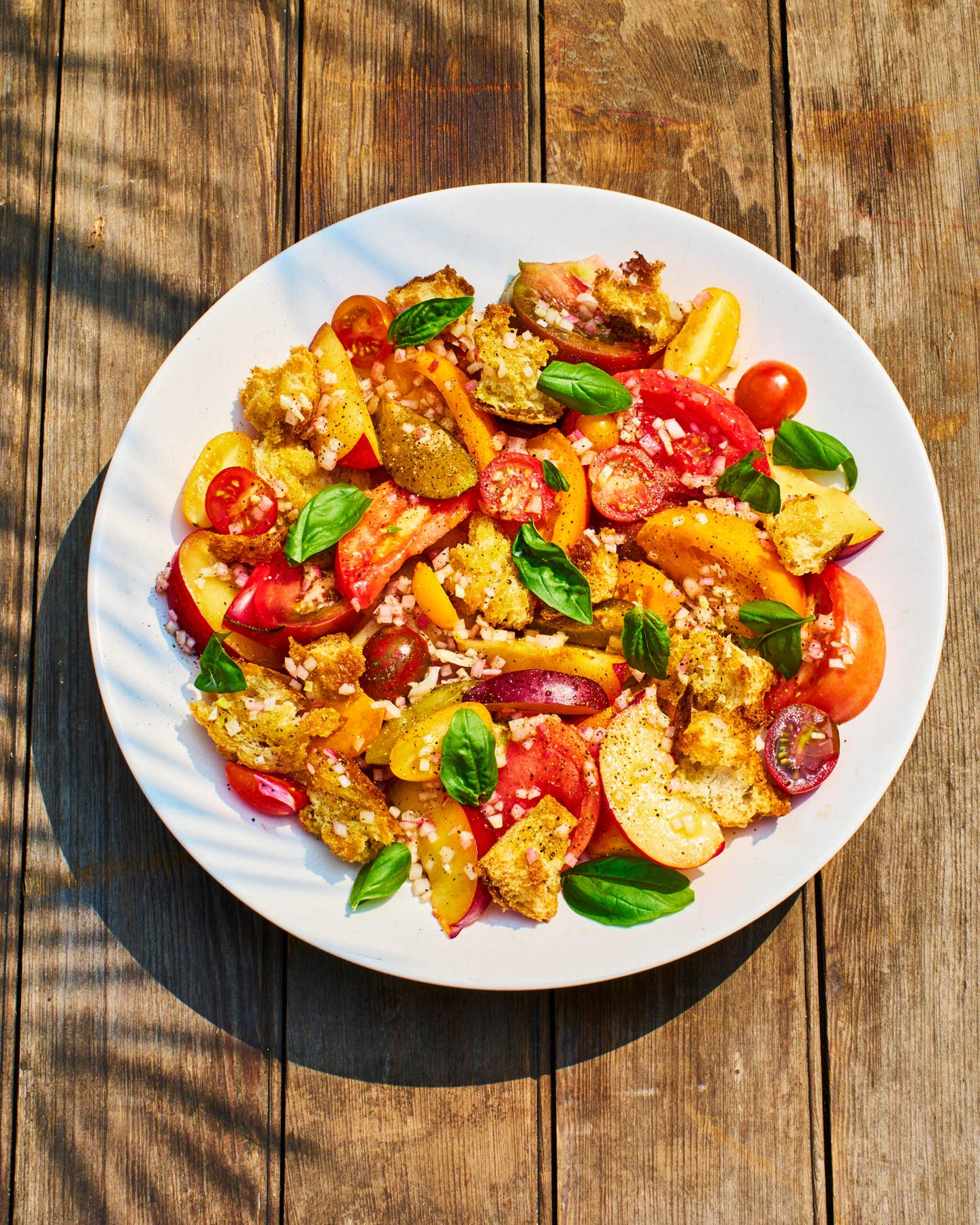
Keep Reading
Continue to Next Story
